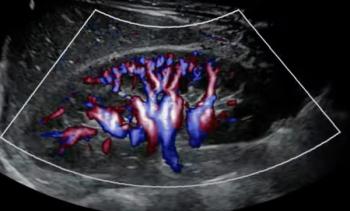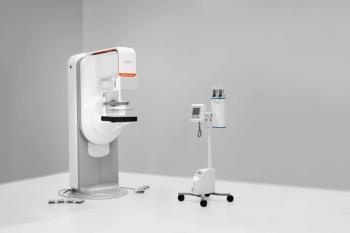
French company introduces low-dose x-ray scanner
Biospace Med of Paris will soon market an ultra-low-dose 2D/3D full-body x-ray scanning device for pediatric and orthopedic imaging. The EOS, shown at the 2006 RSNA meeting, is the first clinical product for the company, which has been in business for 17 years. EOS will be available in Europe in early 2007 and in the U.S. after FDA clearance.
Biospace Med of Paris will soon market an ultra-low-dose 2D/3D full-body x-ray scanning device for pediatric and orthopedic imaging. The EOS, shown at the 2006 RSNA meeting, is the first clinical product for the company, which has been in business for 17 years. EOS will be available in Europe in early 2007 and in the U.S. after FDA clearance.
Because it delivers an x-ray dose that is 100 times less than current radiography systems, EOS is ideal for the pediatric imaging market, said Marie Meynadier, Biospace president and CEO. The device is also well-suited for orthopedic practices, because it captures full-body vertical head-to-foot scans of patients in a standing, weight-bearing position, she added.
"It can do general radiography, but it is really focused on pediatric radiology and on osteoarticular scanning," Meynadier said.
The reduction in x-ray dose is due to the efficiency of the detector, according to the company. The proprietary detector counts each photon that enters the chamber, recording the interaction between photons and xenon. The detector is more efficient than standard film-screen imaging systems that require a greater number of photons to interact with an emulsion, according to the company.
EOS is based on proportional multiwire chamber technology, which in 1992 earned a Nobel prize in physics for its creator, Georges Charpak, founder of Biospace. This chamber is a gas particle detector that screens for the presence of xenon and carbon dioxide. As a linear detector, EOS records only one line of imaging data at a time. The detector records a line of data every 30 milliseconds and stores it in a computer memory bank. The line is then processed and displayed.
EOS obtains two perpendicular planar x-ray views simultaneously and presents physicians with the corresponding digital planar radiographs as well as a 3D bone envelope. A 2D spinal exam can be completed in five to 10 seconds; a full-body scan can be completed in less than 25 seconds.
The 2D images are as large as 43 x 180 cm and have 16-bit image dynamics and 250-micron pixel size. Volumetric images are constructed using a patented cognitive-based algorithm from statistical inferences in the 2D set of two planar images.
Newsletter
Stay at the forefront of radiology with the Diagnostic Imaging newsletter, delivering the latest news, clinical insights, and imaging advancements for today’s radiologists.




























